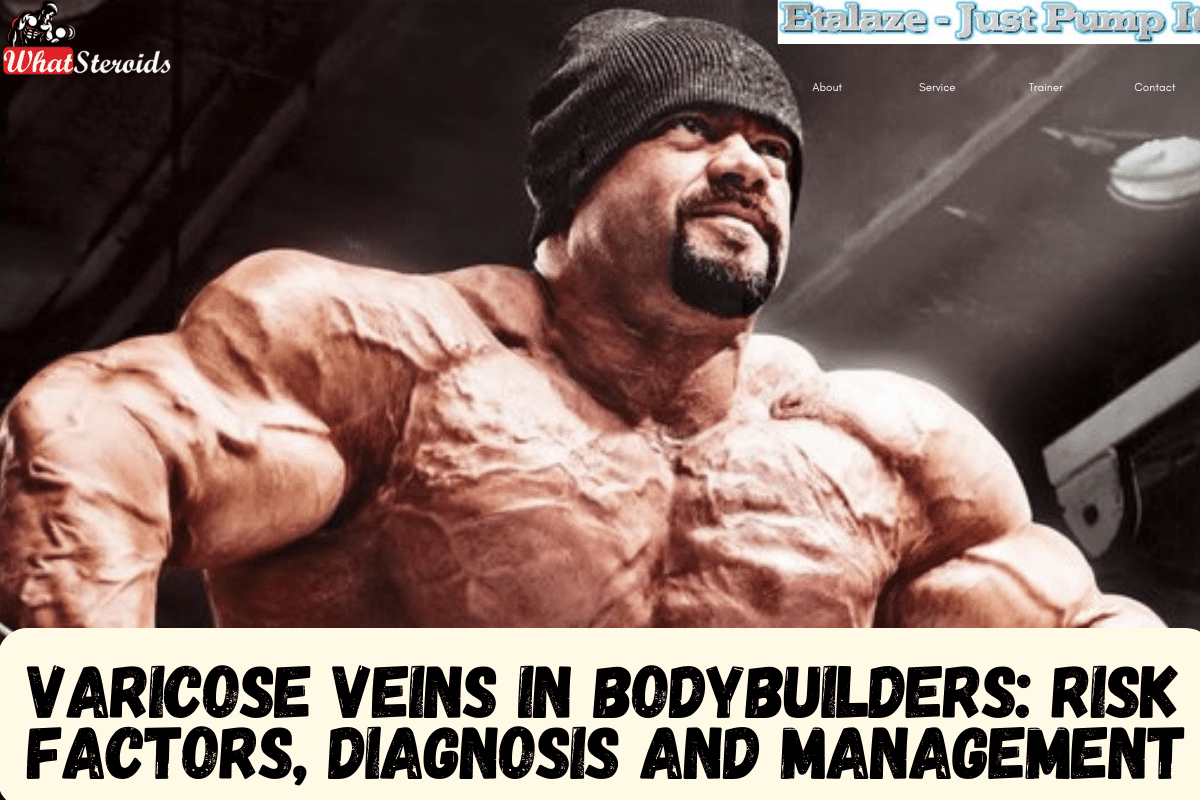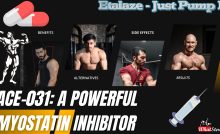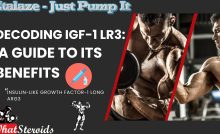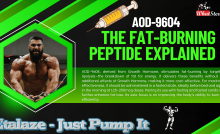Varicose Veins in Bodybuilders: Risk Factors, Diagnosis and Management


Varicose veins, commonly known as twisted or enlarged veins, can occur in individuals who engage in intense physical activities such as bodybuilding. While varicose veins are often associated with factors like age and genetics, there are specific causes that contribute to their development in bodybuilders.
Varicose veins mostly occur when the valves within the veins become weak or damaged, causing blood to pool and the veins to stretch. This can result in discomfort, pain, swelling, and a visible appearance of bulging or rope-like veins.
While varicose veins can affect anyone, certain factors increase the risk of developing them. These include age, family history, obesity, pregnancy, prolonged standing or sitting, and a lack of physical activity.
Varicose Veins in Bodybuilders
Bodybuilders may also be interested in understanding how varicose veins relate to their fitness journey. While intense weightlifting exercises may temporarily increase blood pressure in the leg muscles during workouts, there is no direct evidence linking bodybuilding activities to an increased risk of developing varicose veins.
Don't Miss: Bodybuilding Protein Cycling for Massive Gains
It is important for bodybuilders to be aware of the potential causes of varicose veins so they can take preventive measures. Regular exercise breaks to allow for movement and stretching can help improve blood flow. Wearing compression garments during workouts may also provide support to the veins and reduce strain.
By understanding these causes, one can take proactive steps towards maintaining healthy circulation while pursuing their fitness goals.
As mentioned, varicose veins is a condition characterized by enlarged and twisted veins, can affect individuals from various walks of life, including bodybuilders. While bodybuilding is generally associated with improved cardiovascular health and muscular strength, it is important to be aware of the potential causes of varicose veins in this specific population.
Diagnosis of Varicose Veins In Bodybuilders
The diagnosis of varicose veins typically involves a combination of a medical history review, physical examination, and sometimes imaging studies. Here's an overview of the diagnostic process:
- Medical History: Your healthcare provider will inquire about your symptoms, family history of vein issues, overall health, and lifestyle factors, including your exercise routine.
- Physical Examination: The healthcare provider will conduct a physical examination, focusing on the appearance of your veins, any swelling, and areas of discomfort. They may ask you to stand and sit to observe how blood flows in your legs.
- Duplex Ultrasound: This non-invasive imaging test is commonly used to assess blood flow and the structure of veins. It helps identify valve dysfunction, blood clots, and the extent of the varicose veins.
- Venous Doppler Ultrasound: This specialized ultrasound focuses on the blood flow in the veins and helps evaluate the competence of the valves.
- CT or MRI Scans: In some cases, especially if there are concerns about deeper veins or other complications, a computed tomography (CT) or magnetic resonance imaging (MRI) scan may be recommended.
For bodybuilders, it's important to communicate details about their exercise routine, any symptoms experienced during or after workouts, and any specific concerns they may have. The diagnosis will help determine the severity of the condition and guide the development of an appropriate treatment plan. If you suspect varicose veins or are experiencing symptoms, consulting with a healthcare professional is crucial for an accurate diagnosis and tailored advice.
Causes of Varicose Veins and Risk Factors
Understanding the risk factors and causes of varicose veins is crucial for bodybuilders to maintain their vascular health. The excessive strain placed on the muscles during weightlifting and other high-intensity exercises can lead to increased pressure on the veins. This pressure can weaken the vein walls and valves, resulting in the formation of varicose veins.
Here is a list of common causes that may contribute to the development of varicose veins in bodybuilders:
Genetics
Some individuals may have a genetic predisposition to developing varicose veins. If there is a family history of this condition, bodybuilders may be at higher risk.
Age
The risk of varicose veins generally increases with age.
Gender
Women are more commonly affected than men, often due to hormonal changes during pregnancy and menopause.
Pregnancy
The increased pressure on the veins in the pelvic area during pregnancy can contribute to varicose veins.
Obesity
Excess weight can put additional pressure on the veins, increasing the risk.
Sedentary Lifestyle
Lack of physical activity can impair blood circulation and contribute to vein issues.
Occupation
Prolonged standing or sitting: Bodybuilders often spend extended periods standing during workouts or competitions. Similarly, long periods of sitting during rest intervals or post-competition recovery can impede proper blood circulation and contribute to venous issues. 6. Increased muscle mass: The growth of muscle mass in bodybuilders may lead to increased pressure on surrounding blood vessels, potentially obstructing healthy blood flow and contributing to venous insufficiency.
Prolonged standing or sitting can indeed have negative effects on blood circulation, especially for bodybuilders. When bodybuilders spend long periods of time standing during workouts or competitions, it can impede proper blood flow and potentially contribute to venous issues.
Similarly, extended periods of sitting during rest intervals or post-competition recovery can also hinder healthy blood circulation. Increased muscle mass in bodybuilders is another factor that can affect blood flow. As muscle mass grows, it puts increased pressure on surrounding blood vessels, which may obstruct the normal flow of blood and contribute to venous insufficiency. It's important for bodybuilders to be aware of these potential risks and take steps to promote healthy circulation. This could include incorporating regular breaks during workouts or competitions to allow for movement and stretching, as well as practicing good posture while sitting.
Deep Vein Thrombosis (DVT)
A history of blood clots can affect vein function.
Lack of Exercise
Regular physical activity supports healthy blood circulation.
Smoking
Tobacco use can contribute to poor circulation.
Hormonal Changes
Hormonal imbalances or fluctuations, such as those caused by the use of anabolic steroids or other performance-enhancing substances, can potentially impact vein health and increase the likelihood of developing varicose veins. Additionally, birth control pills and hormone replacement therapy may influence vein health.
Chronic Constipation
Straining during bowel movements can increase abdominal pressure.
Trauma or Injury from Excessive Training
Previous injuries to the veins can affect their functioning. Excessive straining or holding one's breath while performing intense exercises can increase intra-abdominal pressure. This elevated pressure can hinder healthy blood flow and contribute to the formation of varicose veins. Bodybuilders often engage in heavy weightlifting exercises that put significant pressure on their muscles and surrounding blood vessels. This increased pressure can lead to weakened vein walls and valves, making them more susceptible to becoming varicose.
Clothing
Wearing tight clothing, especially around the waist and legs, may contribute to varicose veins.
Increased muscle mass
The growth of muscle mass in bodybuilders may lead to increased pressure on surrounding blood vessels, potentially obstructing healthy blood flow and contributing to venous insufficiency.
By understanding these causes, bodybuilders can take proactive steps towards maintaining healthy circulation while pursuing their fitness goals.
Related Article: Best Infrared Light Devices for Recovery, Hair Loss, And More
Tips to Manage Varicose Veins
Bodybuilders dealing with varicose veins can take certain measures to manage and alleviate symptoms:
Compression Wear
Wearing compression stockings can help improve blood circulation and reduce swelling.
Elevating Legs
Elevating the legs when resting can assist in reducing blood pooling and swelling.
Regular Exercise
While intense weightlifting might contribute to varicose veins, regular, low-impact exercises like walking and swimming can promote overall cardiovascular health.
Weight Management
Maintaining a healthy weight can help alleviate pressure on the veins.
Hydration
Staying well-hydrated supports overall vascular health.
Avoiding Prolonged Sitting or Standing
Changing positions regularly and avoiding long periods of sitting or standing can be beneficial.
Healthy Diet
A diet rich in fiber and low in salt can contribute to overall vascular health.
Medical Evaluation
Consult with a healthcare professional to determine the severity of the condition and explore treatment options if necessary.
Warm-Up and Cool Down
Incorporate proper warm-up and cool-down routines into your workouts to promote healthy circulation.
Avoiding High Impact Exercises
Consider reducing high-impact exercises that may strain the veins, and focus on lower-impact activities.
Cross-Training
Include a variety of exercises in your routine to engage different muscle groups and promote overall cardiovascular health.
Regular Massage
Massage therapy may help improve blood circulation and reduce muscle tension.
Interval Training
Incorporate interval training into your workouts to enhance cardiovascular fitness without excessive strain on the veins.
Gradual Progression
Gradually increase the intensity and duration of your workouts to allow your body to adapt without putting excessive stress on the veins.
Vitamin C
Foods rich in vitamin C, like citrus fruits, may support blood vessel health.
Omega-3 Fatty Acids
Include sources of omega-3 fatty acids, such as fish or flaxseed, in your diet, as they have anti-inflammatory properties.
Avoiding Tight Clothing
Opt for loose-fitting clothing, especially around the waist and legs, to avoid restricting blood flow.
Cool Showers
Finish your showers with cool water to help improve circulation.
Herbal Remedies
Some herbs like horse chestnut may have potential benefits for venous health, but consult with a healthcare professional before trying any supplements.
Stress Management
Practice stress-reducing techniques like meditation or yoga, as stress can impact vascular health.
Foot Elevation
Elevate your feet above heart level whenever possible to assist with blood flow.
Regular Check-ups
Keep regular appointments with healthcare professionals to monitor your vascular health.
Overall
Understanding the risk factors and causes of varicose veins is crucial for bodybuilders to maintain their vascular health. The excessive strain placed on the muscles during weightlifting and other high-intensity exercises can lead to increased pressure on the veins. This pressure can weaken the vein walls and valves, resulting in the formation of varicose veins.
Importantly, maintaining a well-rounded exercise routine that includes cardiovascular exercises can help improve overall circulation and reduce the risk of venous issues.
Must Read: First Steroid Cycle – Can I Keep My Gains After it?
Recent Posts
ACE-031: A Powerful Myostatin Inhibitor
ACE-031 is a synthetic peptide designed to block myostatin, a natural regulator of muscle growth.…
Decoding IGF-1 LR3: A Guide to its Benefits
IGF-1 LR3 (Insulin-like Growth Factor-1 Long Arg3) is a synthetic variant of IGF-1, a hormone…
AOD-9604: The Fat-Burning Peptide Explained
AOD-9604, along with the similar HGH Frag 176-191, is a peptide derived from Growth Hormone…
Understanding Trenbolone-Induced Cough (“Tren Cough”)
Trenbolone, a potent anabolic steroid, can sometimes cause “tren cough”—a sudden and intense coughing episode…
Creatine vs Myostatin: An Expert’s Analysis
Myostatin, a protein encoded by the MSTN gene, acts as a regulator of muscle growth.…
Raloxifene (Evista) 101: A Non-Surgical Solution for Gyno
Raloxifene, a selective estrogen receptor modulator (SERM), is one of the most valuable yet less…



